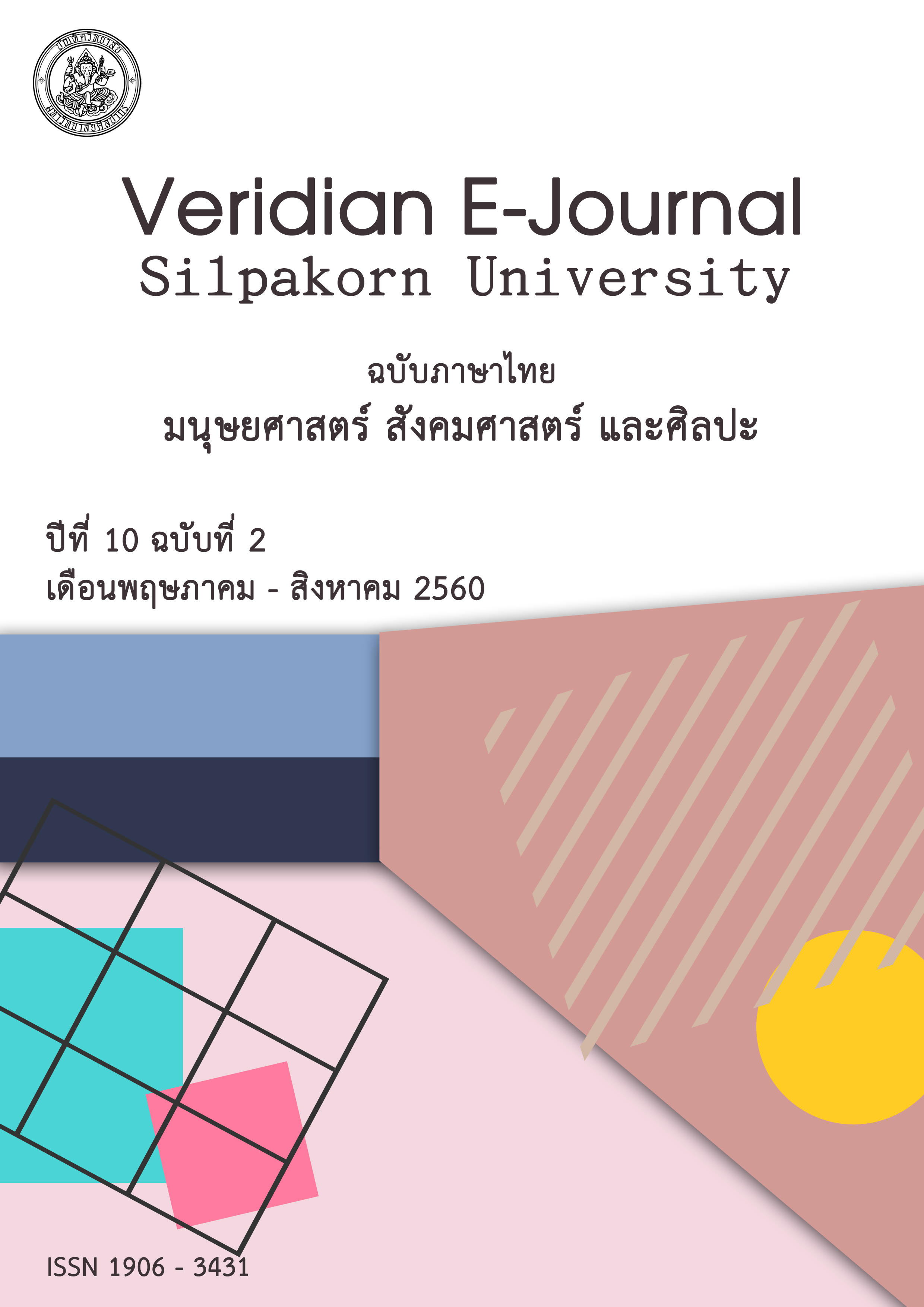การเพิ่มศักยภาพการผลิตมะพร้าวอ่อนเพื่อการส่งออกตลอดโซ่อุปทาน ในเขตพื้นที่จังหวัดราชบุรี
Main Article Content
Abstract
วัตถุประสงค์ของการวิจัยเพื่อศึกษาถึง 1) สถานการณ์การผลิตและสถานการณ์การตลาดมะพร้าวอ่อนเพื่อการส่งออก ในเขตพื้นที่ศึกษา 2) ต้นทุน และผลตอบแทนในการผลิต และ 3) ปัญหา และข้อเสนอแนะเพื่อการเพิ่มศักยภาพการผลิตตลอดโซ่อุปทาน กลุ่มตัวอย่าง คือ เกษตรกรที่ปลูกมะพร้าวอ่อนเพื่อการส่งออกในเขตพื้นที่จังหวัดราชบุรี จำนวน 30 ราย ที่ได้จากการคัดเลือกแบบหลายขั้นตอน และผู้มีส่วนได้ส่วนเสียรายอื่น ที่ได้จากการคัดเลือกแบบเฉพาะเจาะจง เครื่องมือที่ใช้ในการเก็บรวบรวมข้อมูล คือ แบบสัมภาษณ์เกษตรกร และแบบสัมภาษณ์เชิงลึก สถิติเชิงพรรณนาที่ใช้ ประกอบด้วย ค่าความถี่ ค่าร้อยละ ค่ามัชฌิมเลขคณิต และค่าเบี่ยงเบนมาตรฐานสถิติเชิงอนุมานที่ใช้ในการวิเคราะห์ถึงปัจจัยที่มีความสัมพันธ์กับความเป็นไปได้ของเกษตรกร ในการใช้เทคโนโลยีเพื่อเพิ่มศักยภาพการผลิตมะพร้าวอ่อนเพื่อการส่งออก คือ Pearson product moment correlation
ผลการวิจัย พบว่า เกษตรกรมีประสบการณ์ปลูกมะพร้าวอ่อนเพื่อการส่งออกเฉลี่ย 4.77 ปี แหล่งที่มาของปัจจัยการผลิตส่วนใหญ่ ได้มาจากในชุมชน แมลงศัตรูพืชที่สำคัญ คือ ด้วงแรด และหนอนหัวดำ โรคพืชที่สำคัญ คือ โรคใบจุด และโรคยอดเน่า ผลผลิตของเกษตรกรร้อยละ 60.00 ไม่มีการคัดเกรดก่อนจำหน่าย โดยมีคนมารับซื้อผลผลิตถึงบ้าน/สวนมากที่สุด และจ่ายเป็นเงินสด ตลาดต่างประเทศที่ส่งออก คือ ทวีปอเมริกา เอเชีย และยุโรป ที่ขนส่งทางรถห้องเย็น และเรือเดินสมุทร ต้นทุนการผลิตทั้งหมดเฉลี่ย 30,764.13 บาทต่อไร่ รายได้ทั้งหมดเฉลี่ย 53,540.40 บาทต่อไร่ รายได้สุทธิ 23,641.07 บาทต่อไร่ กำไรสุทธิ 22,776.27 บาทต่อไร่ ข้อเสนอแนะที่รัฐควรสนับสนุน คือ การวิจัยและพัฒนาในประเด็นของการผลิต และการตลาด เนื่องจากต้นทุนการผลิตที่สูงขึ้น และยังขาดฐานข้อมูลในการวางแผนการผลิตและด้านการตลาด ผลการทดสอบสมมติฐาน พบว่า ปัจจัยด้านเศรษฐกิจของเกษตรกร มีความสัมพันธ์กับความเป็นไปได้ในการใช้เทคโนโลยีเพื่อเพิ่มศักยภาพการผลิตมะพร้าวอ่อนเพื่อการส่งออก ในประเด็นของการจัดการคุณภาพในกระบวนการผลิตก่อนการเก็บเกี่ยว
The objective of the study were to determine 1) existing condition of production and marketing aspects on export young coconut in the study areas, 2) cost and return, and 3) constraints and recommendations for further production capability enhancemence through supply chain. Studied sample was selected 30 export young coconut farmers in Ratchaburi provincial areas through multistage sampling technique. The rest stakeholders were selected through purposive sampling technique. Interviewing schedule and in depth interviewing schedule were obtained to collect data. Descriptive statistics were frequency, percentage, arithmetic means and standard deviation. Inferential statistics to analyze factor related with the possibility of farmers in export young coconut technology application towards production enhancemence was Pearson product moment correlation.
The findings revealed that average cultivation year was 4.77. Majority of farm input were from their own community. Most serious insect pest were coconut black-headed caterpillar and coconut rhinoceros beetle. Most serious plant pathologies were leaf rot and heart leaf rot. Farm production, accounting for 60% were sold by non grading. Most of products were sold at home/orchards in cash. Export markets were the United State, Asia and also Europe by transport in refrigerated truck and cargo ship. Average cost was 30,764.13 baht per rai. Average gross income was 53,540.40 baht per rai. Net income was 23,641.07 baht per rai. Net profit was 22,776.27 baht per rai. Recommendations that the government should be concerned were the supportive of research and development in production and marketing aspects because of higher cost and lack of production planning and also marketing data. Testing hypothesis pointed out that most factor related with the possibility in export young coconut technology application in terms of quality management in pre harvesting process were economic factors of respondents.

